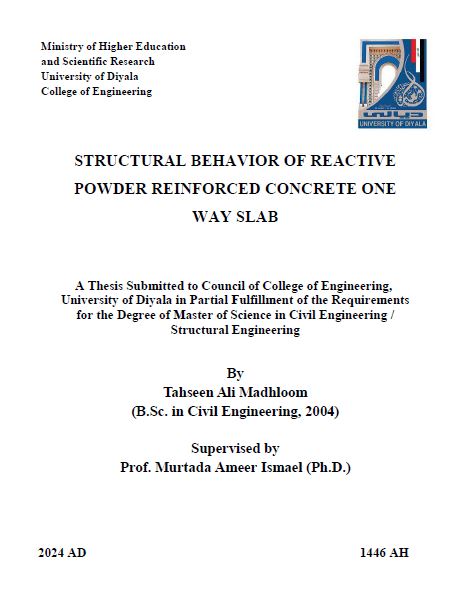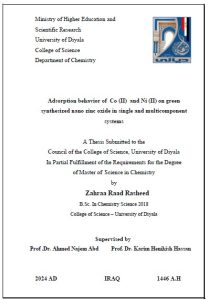المستخلص
Reactive Powder Concrete (RPC) is one of the latest and most important developments in concrete technology. It has received great attention in the last two decades in the world due to its superior mechanical properties such as; high strength, high durability, limited shrinkage, and high resistance to corrosion and abrasion.
This thesis presents an experimental study to investigate the structural behavior of reactive powder reinforced concrete one-way slabs under the effect of four-line loads. The experimental program includes casting and testing nine reactive powder reinforced concrete one-way slab with dimensions of 980mm in length and 400mm in width, to study the effect of steel fiber volumetric ratio (0%, 1%, and 2%), silica fume ratio (15%, 20%, and 25%), tensile steel reinforcement ratio (0.36%, 0.48%, and 0.60%), and slab thickness (40mm, 60mm, and 80mm) on the structural behavior of reactive powder reinforced concrete one-way slabs.
The experimental results showed that increasing the steel fiber volumetric ratio from 0% to 1% and to 2% resulted in an increase of first cracking load test with value of (48.15%, 85.18%) respectively , increase of the ultimate load test with value of (45.43%, 84.35%) respectively, and the value of ultimate mid-span deflection increased from 30.18% to 67.26%, as compared with the control slab which has 1% of steel fiber. The test results also revealed that increasing the content of silica fume from 15% to 20% and then to 25% resulted in an increase of first cracking load test with value of (15.38%, 28.21%) respectively, increase of the ultimate load test with value of ( 17.82%, 29.60%) respectively , and the value of ultimate mid-span deflection increased from 6.44% to 15.45%, as compared with the control slab which has 15% of silica fume. The results of specimen testing indicated that increasing tensile steel reinforcement proportion from 0.36% to 0.48% and then to 0.60% led to an increase in the first cracking load test with a value of (19%, 43%), respectively, an increase in the ultimate load test with a value of (21%, 40.91%) respectively, and the value of ultimate mid-span deflection increased from 17.78% to 28.98%, as compared with the control slab which has 0.36% of tensile steel reinforcement ratio. The test results also revealed that the increase in thickness of slabs from 40mm to 60mm and then to 80mm led to an increase in the first cracking load test with a value of (166%, 240%), respectively, increase the ultimate load by (104.06%, 234.71%), respectively, and the value of ultimate mid-span deflection decreased from 36.82% to 58.26, as compared with the control slab which has 40mm of slab thickness.




